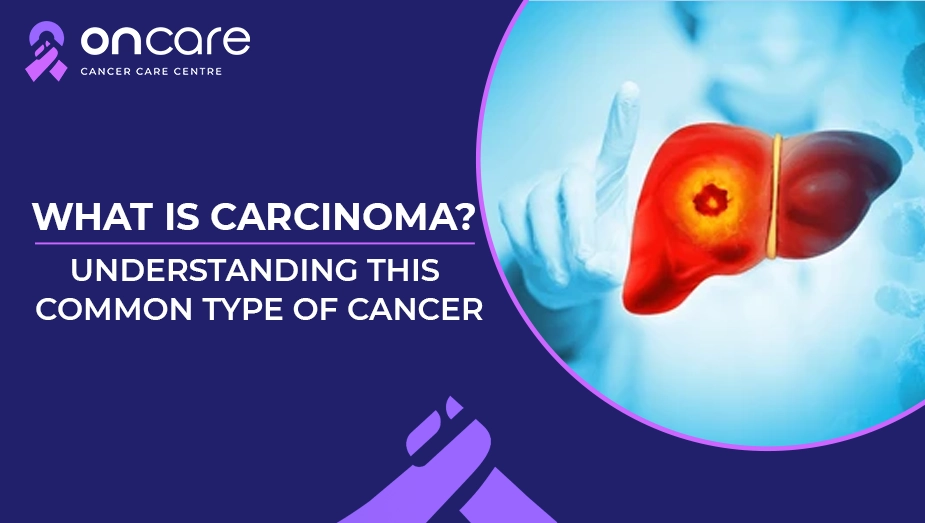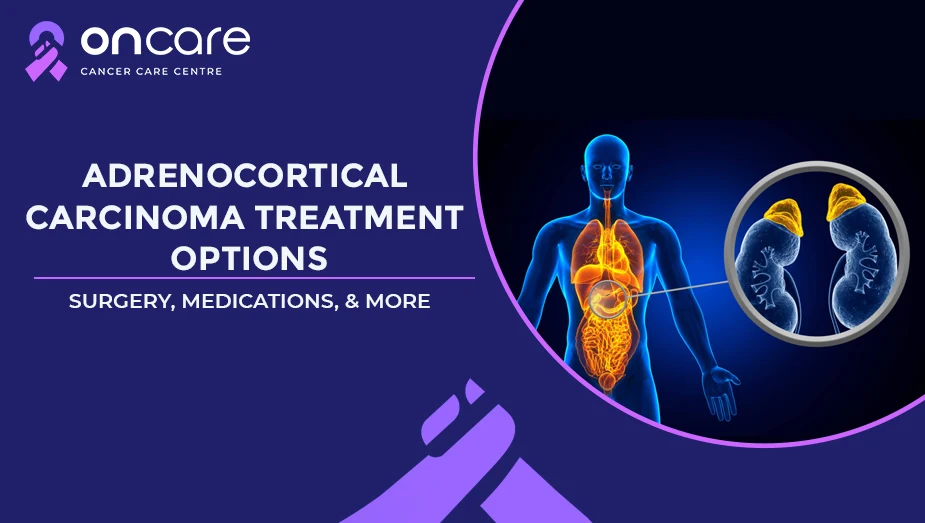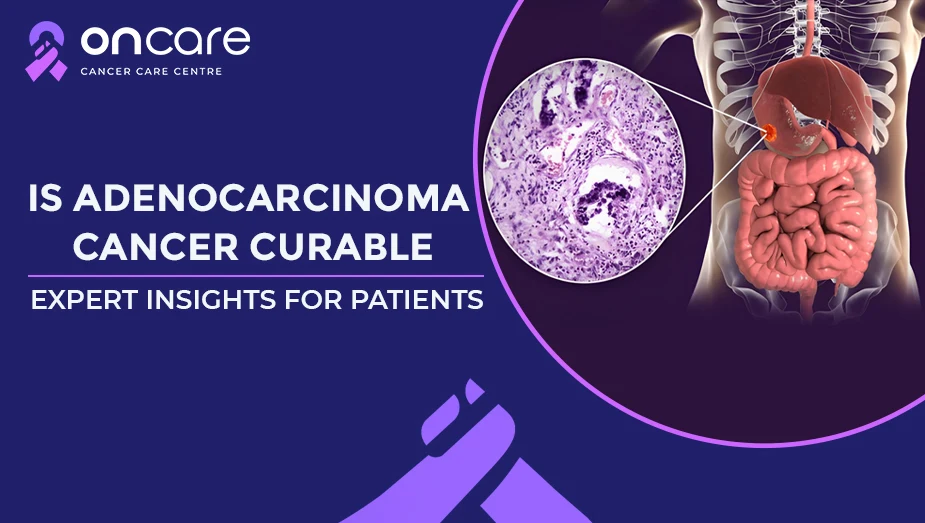Table of Contents
What Is Carcinoma? Understanding This Common Type of Cancer

When people hear a positive cancer diagnosis, they often imagine it could be a single disease. But in reality, "cancer" is a term used to represent broad categories that include many types of diseases, each with different characteristics, behaviors, and treatment approaches. One of the common and widely appearing types of cancer in people is carcinoma. Carcinomas account for 80 to 90% of all cancer cases, which affect millions of people across the world.
In this blog, we’ll discover more about how carcinoma develops and why early diagnosis matters.
What is Carcinoma?
Carcinoma is the common type of cancer developed in the epithelial cells. These cells are known for forming protective layers on inside and outside surfaces of the body. These are the common types of cancer that can develop in various organs such as the skin, lining of organs, and glands.
These cells often cover areas like:
- Skin
- Lining of the mouth and throat
- Organs like the lungs, liver, and kidneys
- Digestive tract
- Reproductive organs
Note: An epithelial tissue is found throughout the body, carcinomas can develop in many different areas of the body.
How does carcinoma develop?
These cancers develop when the normal epithelial cells start to undergo some genetic changes, which makes them grow uncontrollably. Over passing times, these abnormal cells start to form the tumors, which start to invade the nearby surrounding tissues or spread to other parts of the body.
Types of Carcinoma
Carcinomas are often classified based on where they form and how these cancer cells appear when looked at under the microscope.
Here are common types of carcinomas, including:
Basal cell carcinoma
This is the most common type of skin cancer. These types of cancer develop in the basal cells in the outer layer of the skin. These are often caused by long-term exposure to sunlight. These are often considered slow-growing and rarely spread in the body.
Squamous cell carcinoma
These types of cancers develop in the squamous cells that tend to form the skin’s surface and help to line several organs in the body. These cells can appear in areas like the skin, mouth, throat, lungs, or cervix. These are more likely to be spread than basal cell carcinoma if left untreated.
Adenocarcinoma
These types of carcinomas begin in the glandular cells that make the mucus and other secretions. These cells are commonly found in organs like the breast, colon, prostate, lungs, and even pancreas. These are one of the most frequently diagnosed types of carcinomas in people.
Transitional cell carcinoma
These types of cancers are often found in the urinary system, especially in the bladder. These can also appear in the kidneys and ureters. These carcinomas are known for their recurrence in patients, even after completing the treatments.
Large cell and Small cell carcinoma
These types of carcinomas are typically found in the lungs. The small cell carcinomas tend to be aggressive and fast-growing in patients. Meanwhile, large cell carcinoma is less common, but it can spread quickly.
How is Carcinoma diagnosed?
The diagnosis usually involves multiple steps. Here is how carcinoma is diagnosed in cancer patients, including:
Physical examination:
A doctor might ask several questions to confirm the suspicions and perform a physical examination to look for visible signs, including skin changes, lumps, any types of unusual growths, or symptoms related to the affected organs.
Imaging tests:
These tests may include performing X-rays, ultrasounds, CT scans, and MRIs. Performing these tests can help to locate the tumor and determine the size and spread of cancer cells in the suspected patients.
Biopsy:
In this test, a small sample of tissue is collected and examined under a microscope to confirm whether the cells are cancerous or not.
Lab tests:
These including tests such as blood tests, tumor marker tests, and other analyses might be used to understand the cancer’s behaviours.
Treatment options
The treatment options for carcinoma can mainly depend on the type of cancer, stage, and location of carcinoma.
Here are the most common treatments used in patients, including:
Surgery
These are the first line treatments used for localized tumors in patients, which is often used in cancer patients to remove the cancerous tissues.
Radiation therapy
These treatments are highly effective in cancer patients and it uses high energy beams to destroy cancer cells or shrink tumors in patients.
Chemotherapy
These treatments are used to kill rapidly growing cancer cells or shrink tumors in patients. Chemotherapy is often used before or after the surgery to shrink cancer cells, so it becomes easier to remove (neoadjuvant chemotherapy). In some cases, these treatments are used after surgery to prevent cancer cells from returning (adjuvant chemotherapy).
Immunotherapy
These treatments help to boost the immune system to recognize the cancer cells and destroy them. In some cases, immunotherapy has been given with other treatments like chemotherapy.
Targeted therapy
Targeted therapies use drugs that target specific molecules or mutations in cancer cells in patients. These treatments help to kill cancer cells or stop them from multiplying.
Hormone therapy
These treatments are usually used for cancers such as breast cancer and prostate carcinoma that grow in response to certain hormones.
Note: Each treatment used alone or in combination with other treatments like surgery and chemotherapy depending on the individual use.
Who’s at Risk of Carcinoma?
As we all know, anyone can develop carcinoma, but there are some risk factors that increase the risk of developing it in people, including:
- Tobacco use (strongly linked to lung, mouth, and throat carcinomas)
- Excessive sun exposure
- Excessive alcohol consumption
- Family history of cancer
- Exposure to toxic chemicals
- HPV infection (linked to cervical and oropharyngeal cancers)
- Age (Increases over time)
- Chronic inflammation
Practicing healthy lifestyle changes, including a healthy and balanced diet, practicing gentle exercises, and practicing regular health checkups and screenings, can significantly reduce the risk.
Symptoms to Watch out for
The symptoms of carcinoma might vary depending on where the carcinoma developed in a patient's body.
But here are some of the common warning signs may include:
- Persistent lumps or swelling
- Sores that doesn’t heal easily
- Sudden and unexplained bleeding
- Changes in moles or skin patches
- Difficulty swallowing
- Chronic cough
- Sudden weight loss
- Fatigue
- Experiencing pain in specific areas of the body
If you start to experience any of these symptoms for more than two weeks, then do not ignore and consult a doctor immediately.
Why Early Detection matters!
Early detection matters because it saves lives. Early-stage carcinoma is generally considered highly treatable and carries a much more favorable prognosis when compared to other types of cancer, which can be detected in advanced stages.
When carcinoma is diagnosed before it has spread to the nearby tissues or distant organs, early diagnosis can benefit in many ways.
Here’s how:
- Simple surgical procedures: In early stages, the tumors are smaller and more localized, allowing the surgeon to remove them with less invasive surgical procedures and techniques to reduce the risk of further complications.
- Less aggressive treatments: Early diagnosis often destroys the need for intensive therapies including high-dose chemotherapy and extensive radiation therapy.
- Faster recovery: When the treatment is less intense, patients typically experience shorter periods of healing and few long term side effects.
- Increased survival rates: Patients with early stage cancers are often associated with significantly increased survival rates, when treatment is more effective before the cancer progresses.
Consult Today
Carcinomas are one of the common types of cancer. It's also one of the most treatable and manageable types of cancer, especially when detected in its early stages. Understanding what carcinoma is and its risk factors and taking proactive steps towards improving your health can empower your cancer healing journey.
At Oncare, we offer premium-quality cancer treatments, including advanced cancer surgeries at an affordable price range with an experienced cancer specialists consultation.
If you or any loved ones of yours are diagnosed with cancer, then visit Oncare Cancer Center and book an appointment with our experienced cancer specialist today. Get an estimated cost of your cancer treatments today!
Frequently Asked Questions
Here’s how the carcinoma is treated in patients, including:
- Surgery
- Chemotherapy
- Radiation therapy
- Targeted therapy
- Immunotherapy
- Hormone therapy
Here are few tests and examinations that used in the diagnosis, including:
- Physical examination
- Blood tests
- Imaging
- Biopsy
Here are certain factors that increase the risk of developing carcinoma in people, including:
- Age: People above the age of 65, if you are older.
- Sex: Studies suggests that men have higher risk for carcinoma
- Race/ ethnicity: People belonging to black race are at great risk for developing adenocarcinomas, including lung cancer, colon cancer and prostate cancer.
Book an Appointment
Related Blogs

Adrenocortical Carcinoma Treatment Options: Surgery, Medications, and More
Explore treatment options for adrenocortical carcinoma, including surgery, medications, and radiation. Learn how personalized care can enhance outcomes.

Prostate Carcinoma Stages and Prognosis Explained
Know about prostate carcinoma, its early symptoms, Gleason score, treatment, and prognosis, a clear guide to help you understand and manage prostate cancer.

Peritoneal Carcinomatosis Explained: Risk Factors and Prognosis
Learn what peritoneal carcinomatosis is, how it spreads, its key risk factors, and prognosis. Get clear, easy-to-understand insights for patients and families.

Is Adenocarcinoma Cancer Curable? Expert Insights for Patients
Discover more about adenocarcinoma cancer and whether it's curable, factors that affect the curability, tumor biology and molecular features, and aggressive nature.

